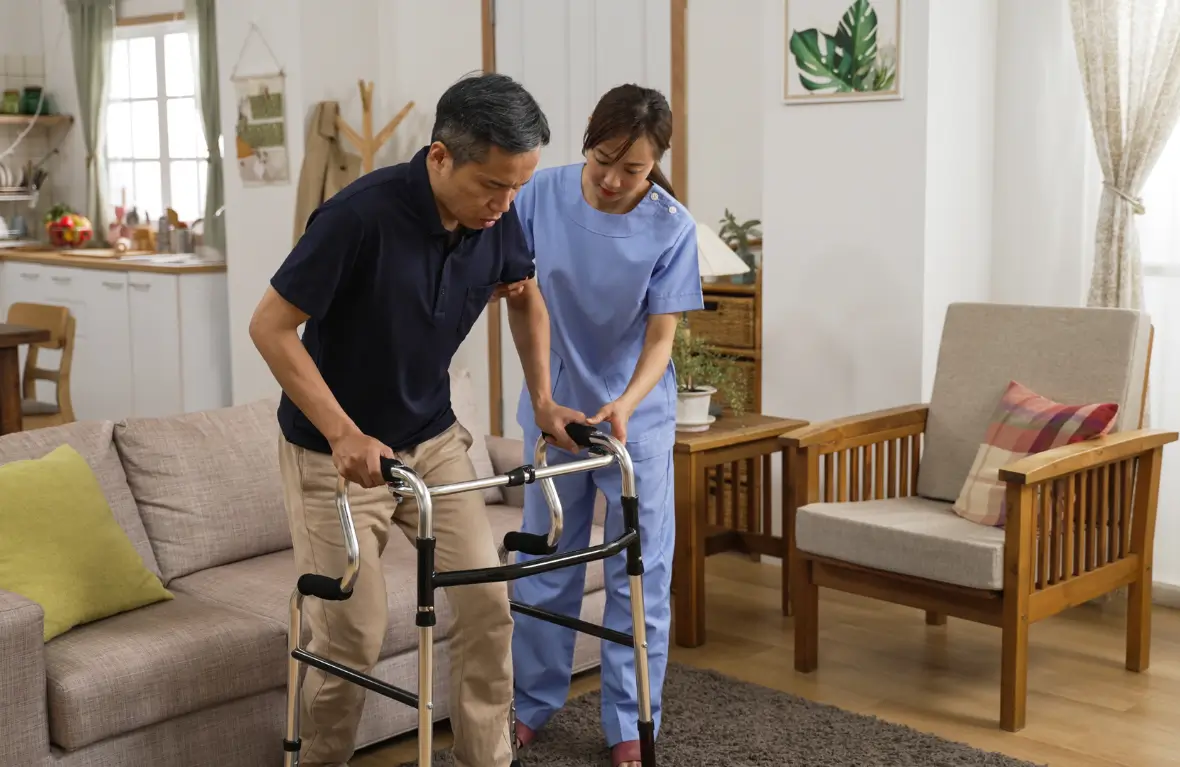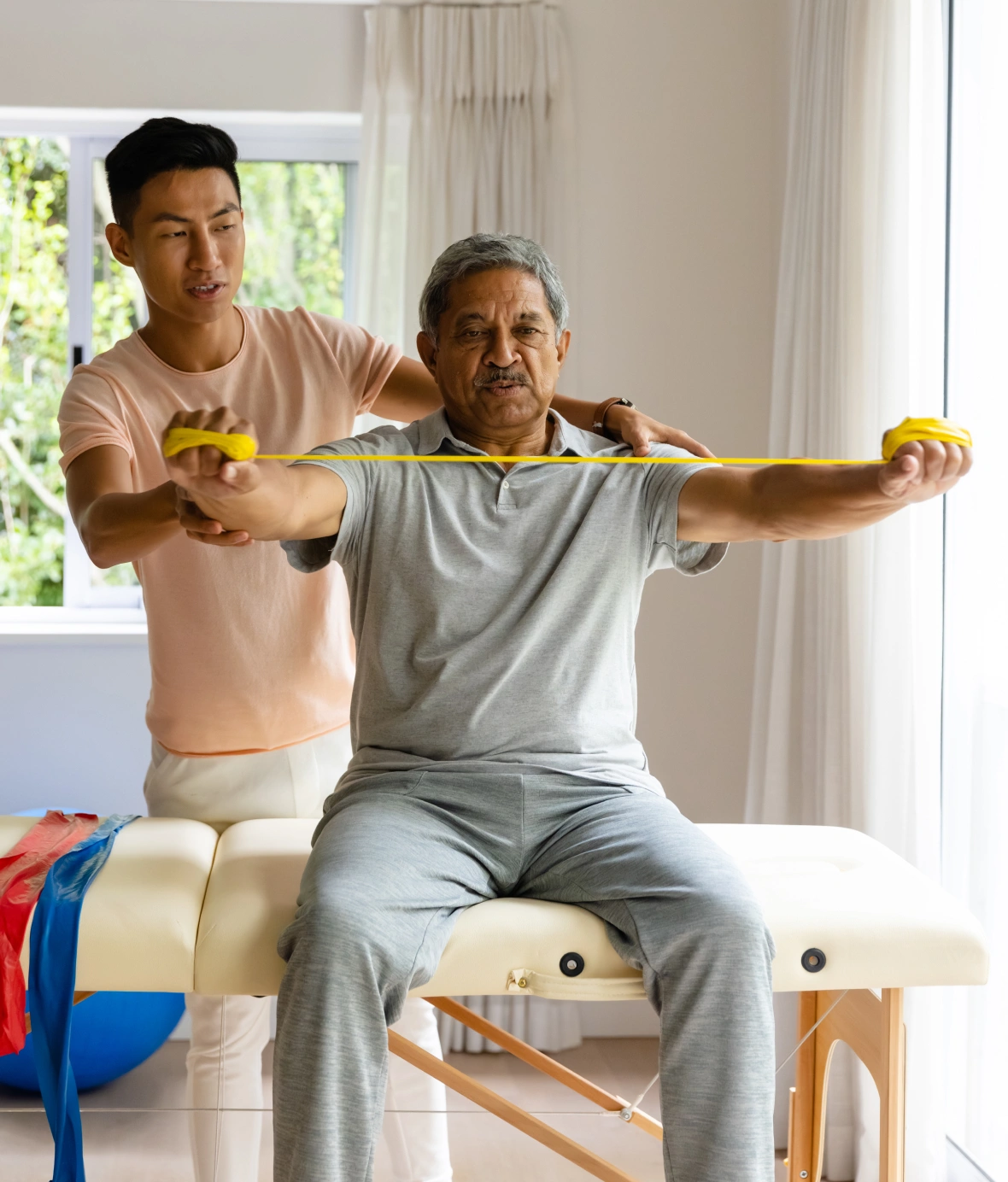
Book an Appointment
Your life is waiting. Fast, long-lasting relief is nearby.

“Progress is progress, no matter how slow. Keep moving forward—your future self will thank you.”

Stroke rehabilitation is a specialized recovery program designed to help individuals restore mobility, regain independence, and improve overall function after a stroke. A stroke can cause muscle weakness, paralysis, speech difficulties, balance problems, and cognitive impairments, making everyday activities challenging. With a structured rehabilitation plan, stroke survivors can relearn essential skills, strengthen muscles, and enhance brain function, significantly improving their quality of life.
At Painflame, we provide the best stroke rehabilitation in Gurgaon, offering personalized therapy programs that focus on physiotherapy, neuro-rehabilitation, speech therapy, and occupational therapy. Our expert team uses advanced techniques, assistive devices, and targeted exercises to promote faster recovery, improved coordination, and long-term independence. Whether recovering from a mild or severe stroke, our goal is to help you regain function, prevent complications, and restore confidence in daily life.
Stroke often leads to muscle weakness in one arm, leg, or both on one side, making movement and daily tasks difficult. Rehabilitation includes strength training, mobility exercises, and functional movement therapy to restore independence. Therapies focus on improving coordination, posture, and neuromuscular control to help patients regain limb function. Techniques such as gait training, resistance exercises, and proprioceptive retraining enhance muscle activation and balance, ensuring gradual but steady recovery.
Severe strokes can cause complete paralysis on one side, leading to loss of mobility and difficulty performing daily activities. Rehabilitation involves passive and active movement therapy, neurostimulation, and assistive devices to restore function. Techniques like mirror therapy, weight-bearing exercises, and electrical stimulation promote nerve activation and muscle re-education. Physiotherapists also focus on compensatory strategies, adaptive equipment training, and functional task practice to improve independence and prevent long-term complications.
Weak or paralyzed shoulder muscles post-stroke can cause shoulder subluxation (partial dislocation), pain, and instability, restricting arm movement. Rehabilitation focuses on joint realignment, muscle strengthening, and neuromuscular re-education to improve stability. Techniques like therapeutic taping, proper positioning, and assisted movement exercises help reduce pain, support weak muscles, and restore shoulder function. Manual therapy, resistance exercises, and functional movement training also assist in preventing joint degeneration and regaining full arm use.
Stroke can impair speech (aphasia) and swallowing (dysphagia), affecting communication and eating ability. Rehabilitation involves speech therapy, muscle strengthening exercises, and swallowing retraining to restore function. Speech therapy focuses on word retrieval, sentence formation, and vocal clarity, while swallowing therapy improves muscle control and prevents aspiration (choking risk). Techniques such as oromotor exercises, sensory stimulation, and cognitive-linguistic therapy are used to help stroke survivors regain confidence in communication and safe eating habits.
Therapy includes strength training, mobility exercises, and neurostimulation to enhance muscle control, flexibility, and movement, helping stroke survivors regain independence in daily activities.
Rehabilitation uses gait training, core exercises, and weight-shifting techniques to improve postural control, stability, and walking ability, reducing the risk of falls and promoting safe mobility.
Speech therapy focuses on language exercises, muscle re-education, and breath control to help stroke patients regain clear speech, articulation, and swallowing ability, improving confidence and quality of life.

Stroke rehabilitation involves various therapies to restore mobility, strength, and coordination. Patients may experience muscle stiffness, weakness, balance issues, or sensory changes as they progress through recovery. At Painflame, the leading stroke rehabilitation center in Gurgaon, our specialized programs help patients regain movement, improve function, and enhance overall well-being.
Many stroke survivors experience muscle stiffness, spasms, or involuntary contractions, which may limit movement. Therapy helps relax muscles, improve flexibility, and restore function.
Rehabilitation can cause muscle fatigue and weakness as the body relearns movements. Strength-building exercises gradually enhance endurance, mobility, and independence.
Post-stroke, patients often feel unsteady while standing or walking. Balance training focuses on stability, posture correction, and gait improvement for safe mobility.
Some patients feel tingling, numbness, or reduced sensation in affected limbs. Therapy stimulates nerve function, enhances circulation, and promotes sensory recovery.
The duration varies based on stroke severity and individual progress. Some patients improve within a few months, while others may need long-term therapy to regain full function.
While full recovery depends on stroke severity and early intervention, rehabilitation helps restore mobility, speech, and independence, significantly improving quality of life.
Rehabilitation should start as early as possible, ideally within the first few days to weeks after a stroke, to maximize recovery potential and prevent further complications.
Stroke rehabilitation includes physiotherapy for mobility, occupational therapy for daily activities, speech therapy for communication, and cognitive therapy for brain function.
Rehabilitation may cause mild discomfort as muscles strengthen and mobility improves, but it is designed to be safe, controlled, and gradually progressive for long-term recovery.